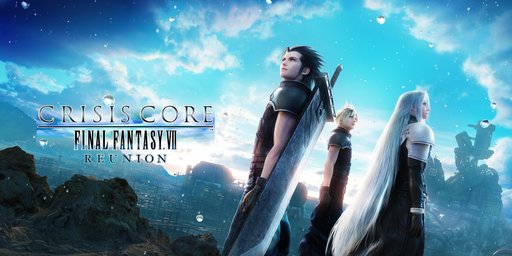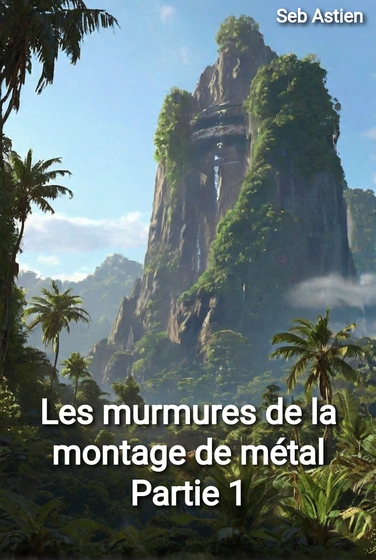Crisis Core : Final Fantasy VII Reunion

Crisis Core : Final Fantasy VII - Reunion is a video game developed and published by Square Enix in 2022. The game is a remaster of Crisis Core : Final Fantasy VII released in 2007 on the Playstation Portable (PSP). It is a prequel to Final Fantasy VII placed seven years before the main game that follows the story of Zack Fair. Back in its time, Crisis Core enjoyed strong sales with 2 millions copies sold and received good critics. The remaster has been made to celebrate the 25 years old of Final Fantasy VII.
During the war that opposed the Shinra company and the Wutai Nation, Second Class SOLDIER Zack Fair and his mentor Angeal Hewley got dispatched to support the war effort in the field. However, during the operation, Angeal disappeared growing the list of the mysterious SOLDIER members that got missing. Appointed to a search mission with Turk member Tseng, Zack discovers that Angeal deserted Shinra alongside with Genesis Rhapsodos, another missing SOLIDER member that formed with Sephiroth the three elite members of the Shinra’s military. With the apparition of Genesis cloned warriors attacking the Shinra building, Zack, now promoted to First Class SOLIDER and Sephiroth are tasked to find Genesis, Angeal, and the professor Hollander who stole the company’s technology to create another kind of supersoldiers.
I’ve never played the original version of this game, and I’ve noticed that its gameplay and overall GUI is very inspired by Final Fantasy VII Remake. Or maybe it’s the opposite and FFVII Remake was inspired by it for continuity purpose. The game is an action-RPG with combats in real time on field with the ennemies appearing to initiate the fight. According to some sources I’ve read, the game’s assets such as the 3D models has been remade, the soundtrack includes a rearranged score, and the dialogues are fully voiced. Unlike FFVII Remake which was a brand new game, this one remains based on its original and the development focused on staying close to the original one. I suppose that’s why the character’s movements and the gameplay are a little more rigid that FFVII Remake. Also, we clearly notice that the maps are quite small, with a lot of reused area made to be modular by closing and opening some accesses.
Crisis Core is not an open-world game, the character is limited to the available area during the chapter and can explore other areas by taking missions on save points. The missions are the way to expanse Zack’s abilities and also its level. Actually, Crisis Core is not using the standard experience leveling way, but a more random one related to the combat system we will see after. Similar to FFVII Remake, the character can equip accessories and materias in order to activate its abilities. Several sets of equipment can be stored according to various needs : magic, physical attack, defense. You cannot change the equipment set in battle. Zack’s weapon cannot be changed too. Still in the equipment parts, during the beginning of the game the player will unlock features such as the materia fusion that will allow them to create more powerful ones.
The combat system is quite dynamic. However, I regret there is no automatic mode similar to FFVII Remake that allow the player to concentrate on the skills and let the character fighting automatically, because I’m lazy in video games. The combat system uses what is now a standard for the Final Fantasy series : an attack key, a guard key, an evade key, and the special skills. Crisis Core uses a vulnerability system for the foes that will be always critical if an enemy is attacked from behind or if using an element-aspect skill for which they’re vulnerable.
The most singular part of Crisis Core battle system is the “Digital Mind Wave” (DMW) which is a slot machine-like mechanic that applies random effects during the battle. As long as the player progress in the game, or unlock new abilities during the side missions, the DMW will be expanded with new images related to the character Zacks befriend in the story, or the summons he unlocks. When the DMW stops with the same three pictures, Zacks will be able to perform a special Limit Break or receive temporary bonuses such as unlimited MP or AP, or invulnerability to some skills for a short time. If the numbers line up as “777”, Zack will level up and get better characteristics. The material can also be leveled-up by this mechanic. So instead or earning experience and leveling-up, the evolution of Zack is more based on randomness. That’s not a real problem, the character’s evolution remain consistent with the story and the missions.
Visually, Crisis Core is quite beautiful and the the few screenshots I’ve saw from the original game show a nice amelioration of the rendering. Despite having new 3D models, the characters remains a litle more rigid and less “alive” than in FFVII Remake because their acting has not been remade. I have some regrets about the lack of variety in the field missions because it’s always the same set of maps recycled, so you’ll feel like it’s very repetitive. The game also features some nice video cut scenes.
As a prequel, Crisis Core unveils some details that happened before Final Fantasy VII. The game is focused around Zack and we get a development of his SOLDIER career and his fate. The other main character that returns in this prequel is Sephiroth, the antagonist of the original game. In FFVII, Sephiroth was mad and we never had the opportunity to discover this former hero character. Crisis Core developed him in a more human aspect, seeing him friendly and a kind of mentor-like to Zack in some moments. We can also witness his falling into madness. Of course, the story develops Zack’s romance with Aerith. Finally, the other special relationship developed is the background of Cloud Strife, the main character of FFVII that started as a regular infantryman and became the inheritor of Zack’s legacy. The other returning characters are the Turks which Zack is friend with, especially with Tseng their leader and one of their female operative Cissnei (a character created for another FFVII spinoff game that does not appear in the original one).
If the story is globally nice, I must admit the dialogues were often a kind of poor and sometimes very long. Regarding the new characters and the antagonist Genesis, I really didn’t liked it. The character was quite tasteless in my opinion, only quoting the LOVELESS epic that is basically the scenario of the game as the character is obsessed with. The character was too much arrogant and theatrical to me.
Despite being a nice game, there’re some things that annoyed me a little. The side missions are quite repetitive and get quickly boring. Also, if the soundtrack is globally great, the musics played during the missions feels so conventional, as if it was some standard stock musics of a random Android game. I’ve been annoyed too by the gameplay fillers during the main story, such as the search for Zack’s wallet in the Sector 5 slums. This part was terribly boring and slow. The last level was also a pain for me, with repetitive fights with a random difficulty, sometimes monsters you one-shot, other times monsters that endure a lot. And an exploration that was very long. Some levels were also in the good old “one step, one fight” that some old Final Fantasy games had.
Anyway, if the game had some weakness to me, it was globally a good run. Despite an over extended story that was filling a little to much according to my tastes, we can enjoy the background story of several important Final Fantasy VII characters and see events that were just mentioned such as the Wutai War and the various Shinra projects. A great addition to the FFVII lore that answered some questions and also humanized its main antagonist.
